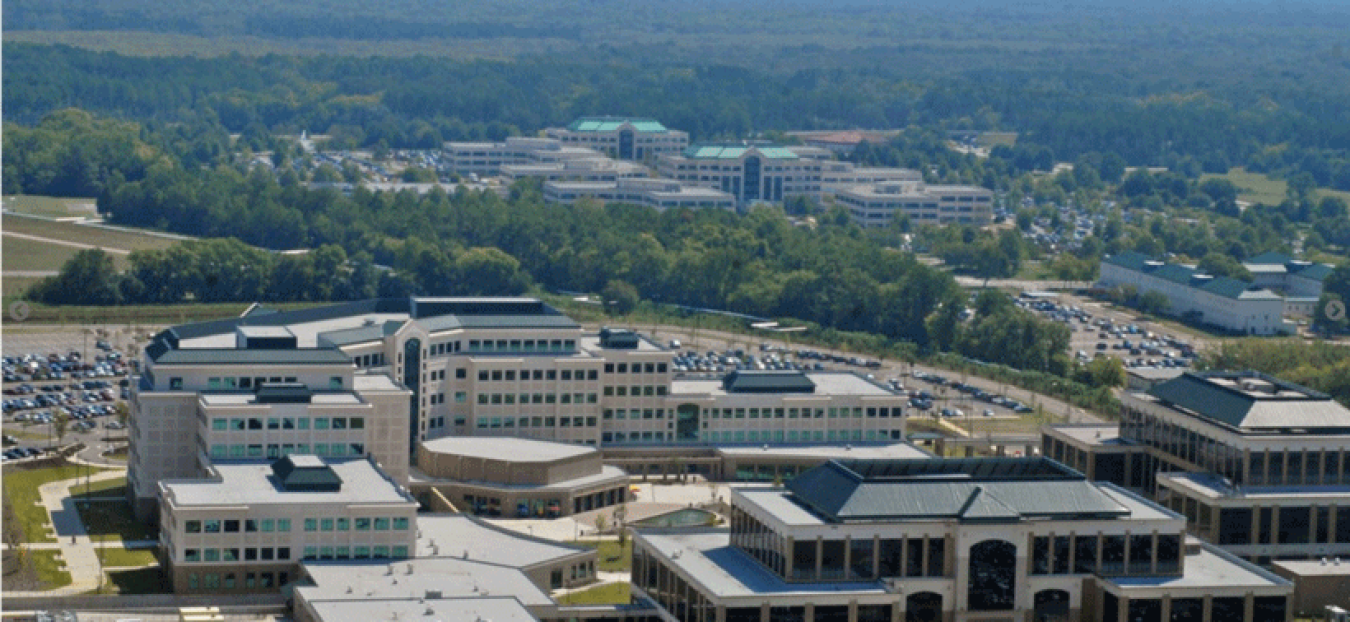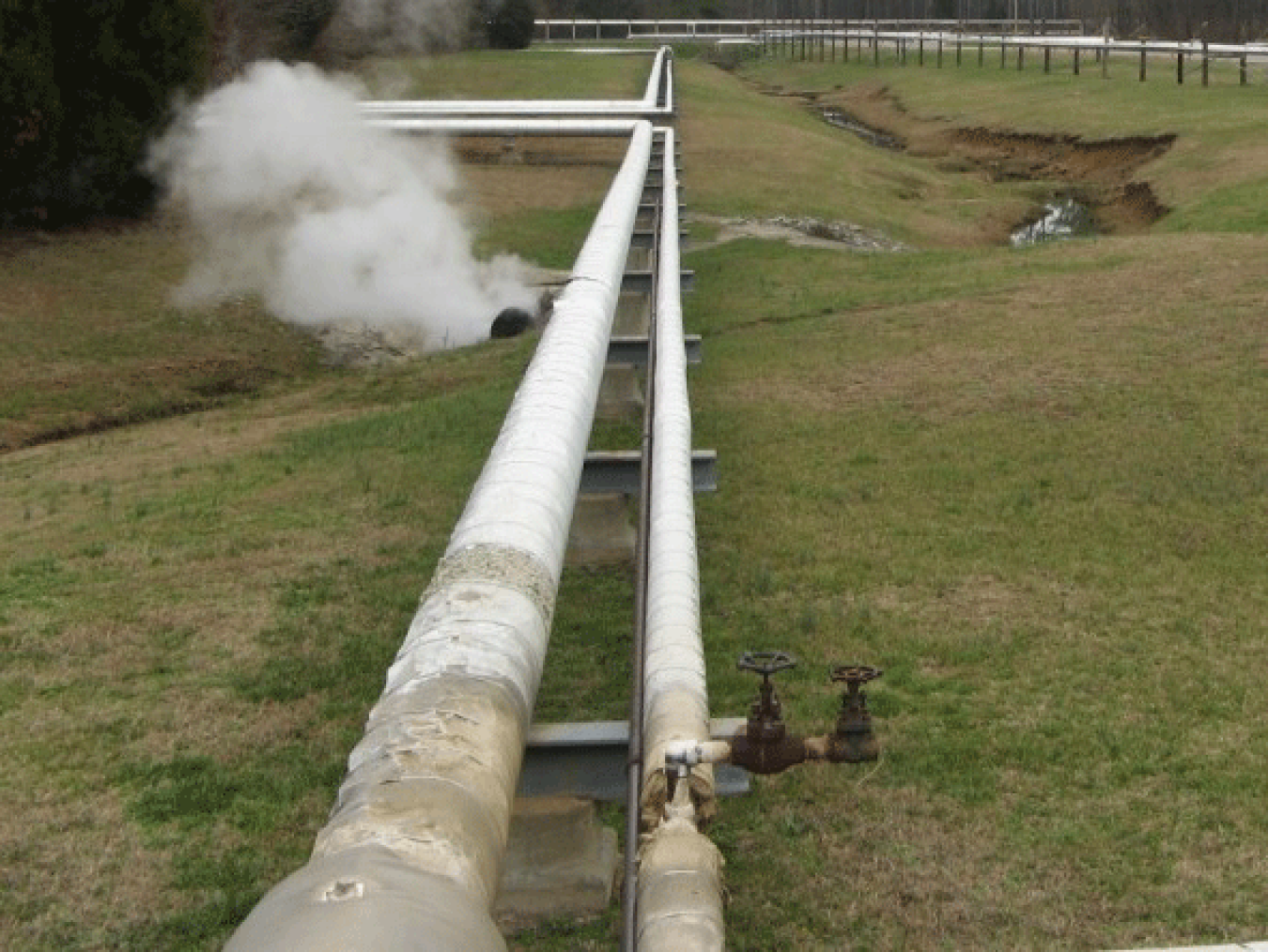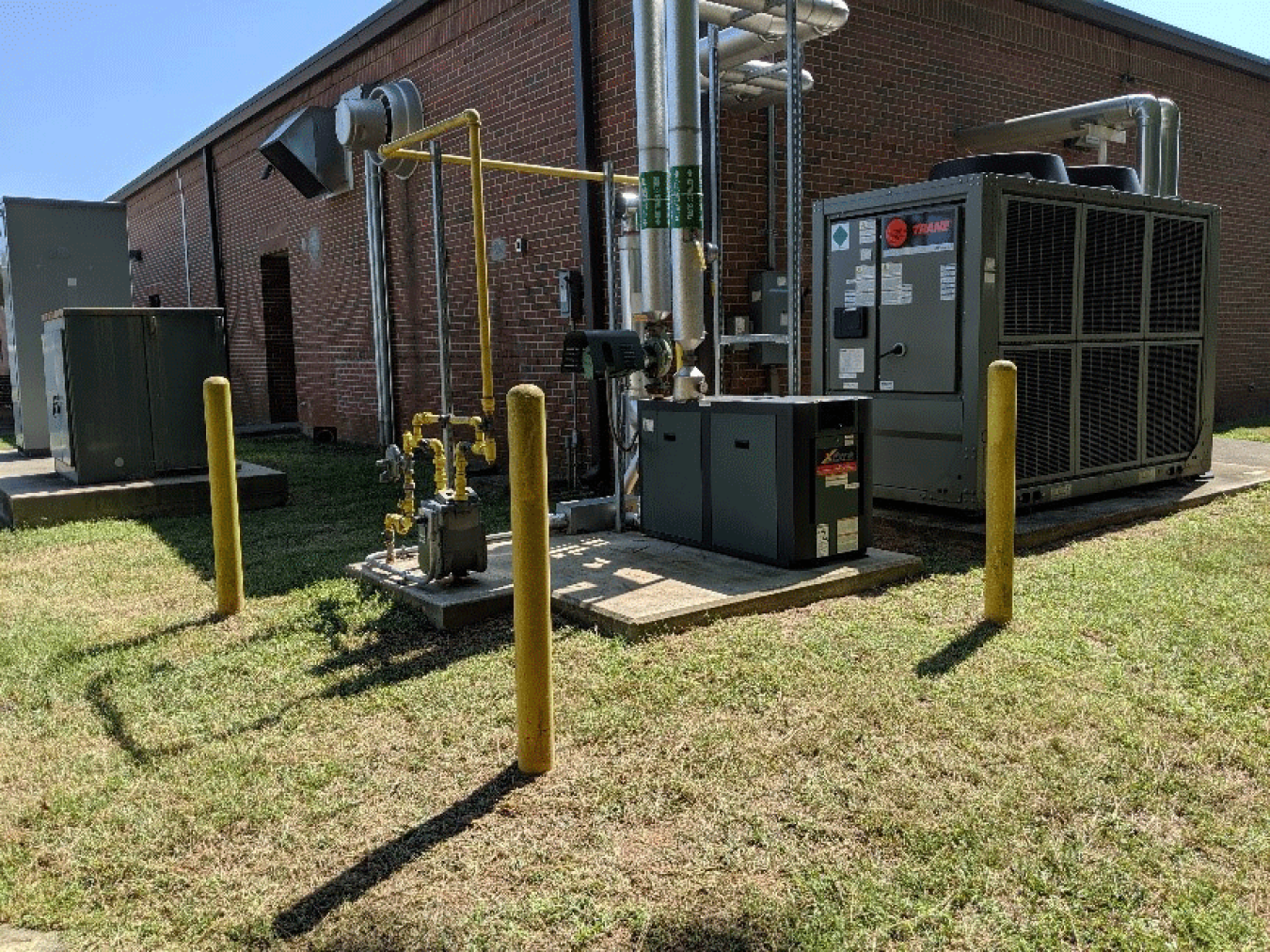
The Redstone Arsenal U.S. Army Garrison encompasses 38,000 acres. Many of its buildings are powered by a centralized steam system. A recent project with Tennessee Valley Authority decentralized heating and power for 27 buildings at the garrison.
The U.S. Army Redstone Arsenal in Huntsville, Alabama won a 2019 Federal Energy Management Program (FEMP) Federal Energy and Water Management Award (FEWMA) for its North Steam Loop Phase 1 project. The Redstone team partnered with Tennessee Valley Authority's (TVA's) federal Energy Services Program to decouple 27 buildings from its central steam distribution system. In place of the steam system, the Arsenal installed new energy-efficient gas and electric heating, ventilating, and air conditioning (HVAC) equipment, coupled with an energy management control system. Leveraging a utility energy service contract (UESC), the project delivers the garrison $1.5 million in annual energy and maintenance savings.
Project Details
Transitioning from a Centralized Steam Plant to Efficient HVAC with Energy Management

Redstone Arsenal performed HVAC upgrades in buildings that were farthest away from the centralized steam plant and suffering from costly steam leaks.
Redstone Arsenal spans 38,000 acres with approximately 11.7 million square feet of building space, with facilities dedicated to the National Aeronautics and Space Administration (NASA), Missile Defense Agency, and Federal Bureau of Investigation (FBI), as well as other civilian agencies. Redstone Arsenal contributes roughly $19 billion per year to the surrounding economy.
As part of the $9.9 million UESC project, Redstone Arsenal removed 27 buildings from its base-wide central steam distribution system and installed energy-efficient natural gas and electric HVAC systems. The HVAC equipment and new electric and natural gas meters are connected to a new energy management control system, enabling remote, centralized monitoring of the buildings' energy performance.
Buildings in the north loop of the base were selected for HVAC upgrades because they were the farthest away from the centralized steam plant and suffered from the highest number of costly steam leaks. Additionally, the lines of buildings that were not transitioned from the steam system were refed to increase efficiency.
In addition to decoupling buildings from the steam system, the project included construction of several geothermal wells to be used for future heat pump systems.
Results
$1.5 Million in Annual Savings; Groundwork for Geothermal
The resulting project saves about $1.5 million annually in steam usage, steam distribution system losses, electrical costs, operations and maintenance, and avoided equipment replacement. Additionally, the newly constructed geothermal field will be used in a Phase Two project to install geothermal heat pumps in 19 buildings.
Lessons Learned
Pick Project Partners With Vision
Redstone Arsenal enjoys a strong partnership with TVA, which provides both energy services and economic impact advice. Rick Penter, TVA project manager for the North Steam Loop Phase 1 project, attributed TVA's success to their philosophy of partnership: the utility company seeks to be "a proponent of energy efficiency and a trusted advisor" for customers.

New high efficiency HVAC equipment was installed as part of Redstone's UESC project.
Test Before Finalizing Plans
Project planners initially believed that Redstone's new geothermal wells could be drilled to depths of at least 500 feet. Test drills, however, proved that they could only be drilled to about 260 feet, forcing the team to redesign the wellfield. After brainstorming and collaboration, the team decided to drill more wells at a depth of only 200 feet. Additionally, because the borewell was not holding and drillers could not keep the pipe casing in place, it took the driller eight months to complete their work instead of an estimated three months. For future projects, the Redstone team recommends more geological testing before plans are finalized.
Plan to Grow
The Redstone Arsenal team is currently working with tenant agencies to strategize for energy efficiency, size systems for additional future loads, and set aside loads for specific tenants in the years to come.

